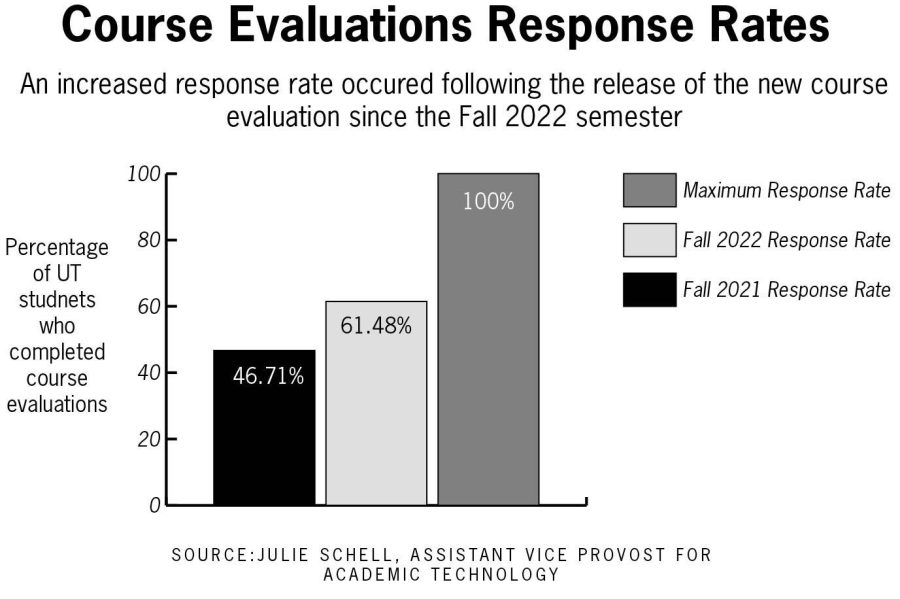New system improves course evaluations for professors
January 12, 2023
A new student course evaluation system with an improved interface and accessibility features launched at the end of the fall 2022 semester following a 2020 resolution advocating for improvements.
“(Students) may have noticed that there was a message (on the new course evaluation system) about paying attention to implicit bias,” Julie Schell, the assistant vice provost of academic technology, said. “Students gave us feedback on that — they thought that was really important and that they were very excited to see that.”
The structure of the old course evaluation system influenced students to only give positive or negative feedback about their classes and professors, Schell said. The new system’s ability for professors to add personal and open-ended questions allows students to provide more informative and reflective feedback, she said.
A resolution task force made by the Educational Policy Committee composed of both students and staff was created to pinpoint flaws in the former system. This included undergraduates’ inability to access the evaluation system through Canvas and the implicit bias of the old questions that prevented students from providing formative feedback, according to the resolution.
With the new system, professors will now be able to see their class response rates and more effectively adapt their class and teaching structures through the addition of their own questions to the end of the form.
“The (evaluations) will also directly allow for examining data in a way that explicitly exposes these potential biases so that they can be recognized, quantified and considered,” the committee said in the resolution.
After first being tested last summer, about 91% of students said that they would be more likely to respond to the questionnaire if professors would offer it as an extra credit opportunity, Schell said.
Biochemistry senior Rebekah Hernandez said she liked that the new system gave the option for students to space out and think through their answers, rather than compiling the best and worst parts of a course in a single question.
Since the switch to the new system, Schell said the response rate increased from about 47% in the fall semester of 2021 to about 62% a year later — the highest change recorded by the University with an electronic system. She said this increase in response rates will provide professors with even more student insight so they can adjust their class structures to best aid undergraduate needs.



